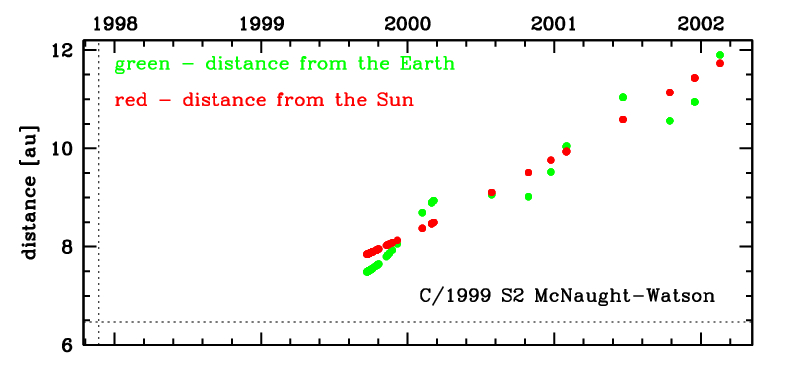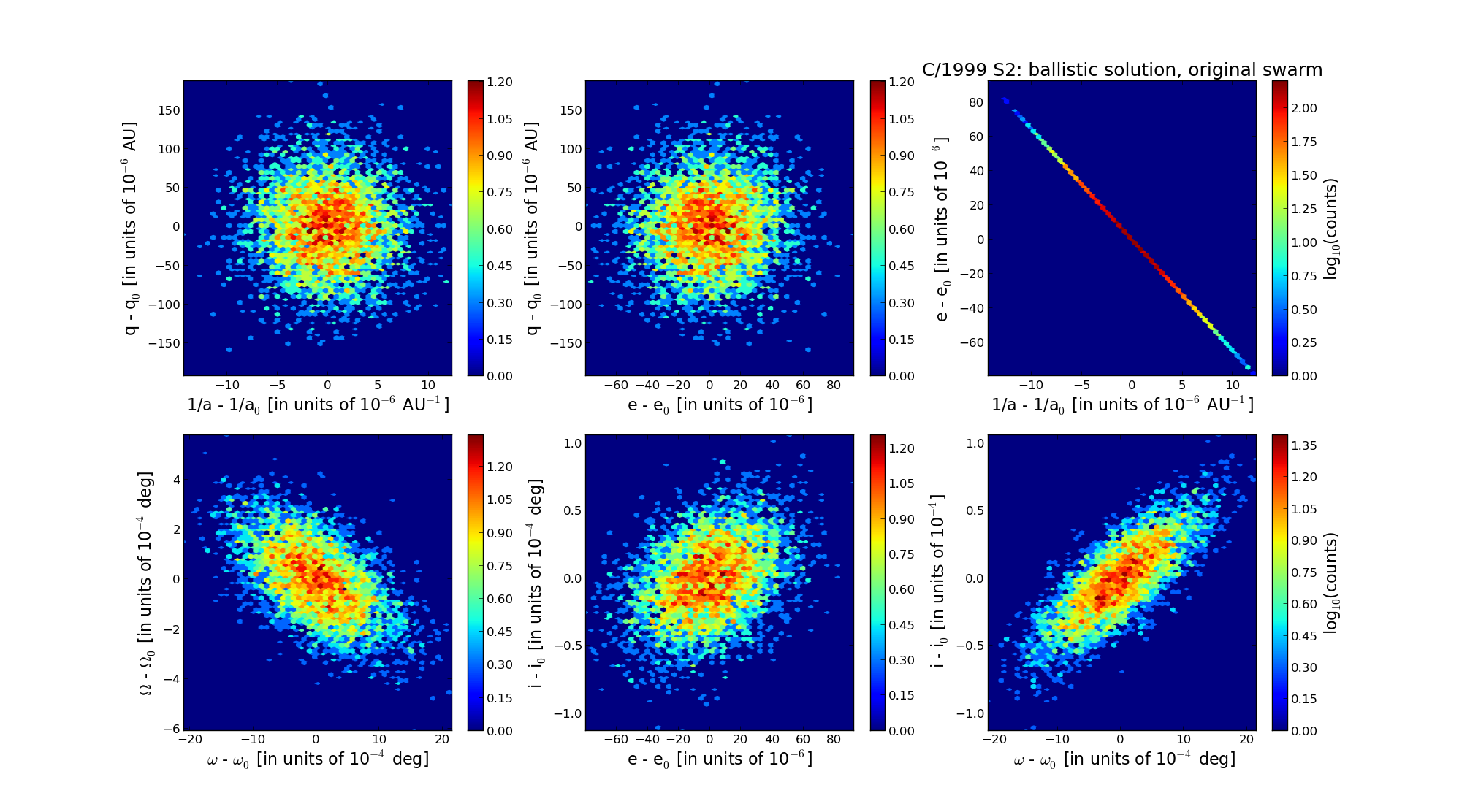C/1999 S2 McNaught-Watson
more info
C/1999 S2 was discovered on 19 September 1999 by Robert H. McNaught on an R-survey film taken by F.G. Watson using UK Schmidt Telescope, 1.8 yr after perihelion passage.
This comet made its closest approach to the Earth on 20 June 1997 (5.670 au), 5 months before perihelion.
Solution given here is based on data spanning over 2.4 yr in a range of heliocentric distances from 7.84 au to 11.7 au.
This Oort spike comet suffers moderate planetary perturbations during its passage through the planetary system that lead to escape of the comet from the solar system on hiperbolic orbit (see future barycentric orbit).
See also Królikowska 2014 and Królikowska and Dybczyński 2017.
This comet made its closest approach to the Earth on 20 June 1997 (5.670 au), 5 months before perihelion.
Solution given here is based on data spanning over 2.4 yr in a range of heliocentric distances from 7.84 au to 11.7 au.
This Oort spike comet suffers moderate planetary perturbations during its passage through the planetary system that lead to escape of the comet from the solar system on hiperbolic orbit (see future barycentric orbit).
See also Królikowska 2014 and Królikowska and Dybczyński 2017.
| solution description | ||
|---|---|---|
| number of observations | 98 | |
| data interval | 1999 09 19 – 2002 02 16 | |
| data type | observed only after perihelion (POST) | |
| data arc selection | entire data set (STD) | |
| range of heliocentric distances | 7.84 au – 11.7au | |
| detectability of NG effects in the comet's motion | NG effects not determinable | |
| type of model of motion | GR - gravitational orbit | |
| data weighting | YES | |
| number of residuals | 184 | |
| RMS [arcseconds] | 0.48 | |
| orbit quality class | 1a | |
| orbital elements (barycentric ecliptic J2000) | ||
|---|---|---|
| Epoch | 1689 07 25 | |
| perihelion date | 1997 11 22.44355500 | ± 0.00653000 |
| perihelion distance [au] | 6.46202592 | ± 0.00004912 |
| eccentricity | 0.99963528 | ± 0.00002453 |
| argument of perihelion [°] | 223.496648 | ± 0.000617 |
| ascending node [°] | 74.396105 | ± 0.000142 |
| inclination [°] | 65.872236 | ± 0.000027 |
| reciprocal semi-major axis [10-6 au-1] | 56.44 | ± 3.80 |
| file containing 5001 VCs swarm |
|---|
| 1999s2a2.bmi |

